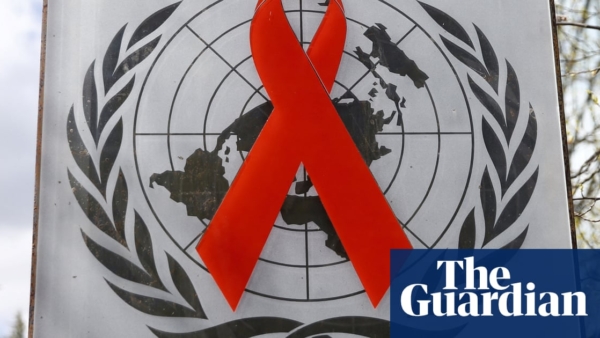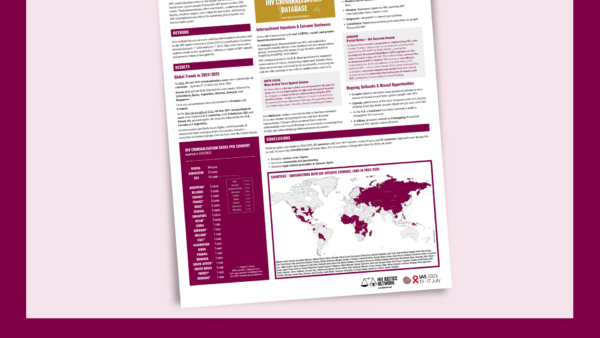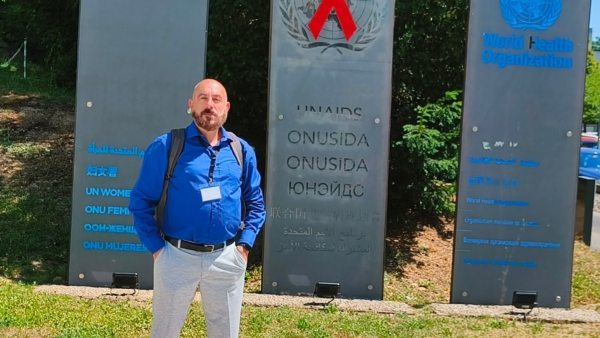
Criminalization of HIV: Spread of the Viral Underclass
by Tyler J. Smith
J.D., 2015, Indiana University Robert H. McKinney School of Law
H-I-V. Arguably, no three letters in American society have generated more fear of a “viral underclass” [1] than those associated with the Human Immunodeficiency Virus (“HIV”). In many states, including Indiana, simply having HIV is a crime with potentially severe consequences. The criminalization of HIV is founded on a fear of something many people do not fully understand and the stigma of “HIV’s association with an ‘outlaw’ sexuality, anal intercourse, gay men, people of color, and people who use drugs.” [2] Indeed, convictions under these statutes rarely have anything to do with actual HIV transmission or risk of transmission. [3] Over thirty states currently have HIV specific criminal statutes “based on perceived exposure to HIV, rather than actual transmission of HIV to another.” [4]
The Infectious Diseases Society of America (IDSA) and HIV Medical Association (HIVMA) assert that “[c]riminalization is not an effective strategy for reducing transmission of infectious disease and in fact may paradoxically increase infectious disease transmission.” [5] Studies further indicate that “these laws discourage individuals from being screened and treated for conditions when early diagnosis and treatment of infected individuals is one of the most effective methods to control the disease.” [6] More people have been convicted under these laws in the United States and Canada than all other countries in the world combined. [7]
Numerous examples illustrate the unfounded fear and stigma that fuel egregious convictions and unjust sentences of HIV positive people. An HIV positive man in Michigan was charged under the state’s anti-terrorism statute with possession of a “biological weapon” after he allegedly bit his neighbor. [8] Another HIV positive man in Texas is currently serving thirty-five years for spitting at a police officer. [9] A man in Iowa with an undetectable viral load received a twenty-five year sentence after a one-time sexual encounter in which he wore a condom. [10] His sentence was suspended, but he was placed on probation for five years and had to register as a sex-offender for ten years. [11]
Many states rightfully criminalize reckless, knowing, or intentional behaviors that actually put others at significant risk. However, some states have other criminal statutes that are overbroad, or criminalize simply having HIV and engaging in conduct that scientifically poses no risk of transmission. Such statutes clearly exhibit a complete lack of scientific understanding of how HIV is transmitted and because of their overbroad nature, give prosecutors “significant discretion in determining whether and how to prosecute individuals arrested or reported for HIV exposure.” [12] The actual risk of transmission depends on the amount of the virus in a person’s blood. [13] The risk-per-exposure for various sex acts, without factoring in how condoms or medical treatment reduce the risk even further, ranges from zero to eighty-two in 100,000. [14] Intravenous drug use risk-per-exposure ranges from sixty-three to 240 in 100,000. [15] Despite the relatively low risk, “courts rarely look at what a person did to further reduce the risk of transmission.” [16] Simply having HIV is a considered a crime.
With overwhelming bi-partisan support, criminalization of HIV became federal in 1990 with the Ryan White Comprehensive AIDS Resources Emergency Act. [17] The Act’s namesake, Ryan White, a thirteen-year old boy from Russiaville, Indiana, contracted the disease in 1984 following a blood transfusion. [18] This act created The Ryan White HIV/AIDS Program; the “most comprehensive Federal program that provides services exclusively to people living with HIV.” [19] It serves more than 500,000 people that do not have adequate health care coverage to manage their treatment. [20]
Congress exercised its power to control funding by requiring states to “protect against intentional transmission” to receive federal funding for the new program. [21] Section 2647 of the Act provided in part that “[t]he Secretary may not grant . . . to a State unless the chief executive officer determines that the criminal laws of the State are adequate to prosecute any HIV infected individual” who intended to transmit HIV through donation of bodily fluid, engaging in sexual activity intending to transmit HIV, or shared needles intending to transmit HIV. [22] This provision was repealed in 2000; however, the seeds for states to go above and beyond were already sown. Some states went further than what the federal law required by defining intentional transmission as non-disclosure of their positive status to a sexual partner. [23]
Although thirty-plus states criminalize HIV under HIV-specific criminal statutes or STD criminal statutes that specifically encompass HIV, [24] zero states have criminalized the transmission or the failure to disclose the positive status of other sexually transmitted diseases, such as the Human Papillomavirus (“HPV”). [25] According to the Centers for Disease Control and Prevention (“CDC”), 33,000 new cases of cancer are reported each year with about 26,900 of these cancers caused by HPV. [26] Nearly all cases of cervical cancer are caused by HPV [27] and 4074 women died of cervical cancer in 2012. [28] In 2013, an estimated 9278 women received a new diagnosis of HIV. [29] In 2012, among women who previously received a diagnosis of AIDS, an estimated 3561 women died. [30] Thus, more women were diagnosed with cancer caused by HPV than women who were diagnosed with HIV and more women died of cancer caused by HPV than women who died of AIDS. [31] Yet HPV has not been criminalized in any state. [32]
Portions of Indiana’s criminal code do make sense. Someone who recklessly, knowingly, or intentionally donates or sells semen or blood that contains HIV could rightfully face felony charges. [33] However, other statutory provisions in the criminal code are overbroad and punish scientifically unfounded conduct. For example, a person without HIV can be charged with a Class C Misdemeanor for “battery” by placing bodily fluid or waste on another person in a rude, insolent, or angry manner. [34] A person without HIV can be charged with “malicious mischief,” a Class B Misdemeanor, for placing bodily fluid or fecal waste with the intent that another person will involuntarily touch it. [35] If a person is HIV positive, both of these offenses become Level 6 Felonies for exposing to others any bodily fluid, including those scientifically proven to not transmit HIV. [36] Battery is a Level 5 Felony if the bodily fluid or waste is placed on a public safety officer, but only if the accused is HIV positive. [37] If the accused is not HIV positive, then committing battery on a public safety officer remains a Level 6 Felony. [38] Therefore, simply having HIV statutorily increases the penalty for these offenses.
Despite laws to the contrary, the CDC clearly states that “[c]ontact with saliva, tears, or sweat has never been shown to result in transmission of HIV.” [39] Very low quantities of HIV have been found in the saliva and tears of some AIDS patients. [40] However, “finding a small amount of HIV in a body fluid does not necessarily mean that HIV can be transmitted by that body fluid.” [41] HIV has not been found in the sweat of HIV-infected patients. [42] Indiana prosecutors have discretion to prosecute HIV positive persons criminally for a variety of offenses related to their HIV positive status regardless of intent to transmit or actual transmission and regardless of whether transmission is even scientifically possible.
Indiana law also criminalizes simply having what it defines a “dangerous communicable disease.” [43] Carriers of HIV, AIDS, and Hepatitis B have a duty to “warn or cause to be warned by a third party a person at risk” of the carrier’s disease status and the need to seek healthcare. [44] HIV positive persons must disclose their status to past, present, and future sexual or needle-sharing partners or face criminal penalty. [45] The burden of proof shifts to the accused to show he or she in fact disclosed his or her positive status to those past, present, or potential partners. [46] A person who “recklessly” violates the statutory provision commits a Class B Misdemeanor. [47] A person who “knowingly or intentionally” fails to comply with the statutory provision commits a Level 6 Felony. [48] Each day a violation of the duty statute continues is considered a separate offense. [49] In Indiana, a Class B Misdemeanor carries a penalty of imprisonment for a fixed term of not more than 180 days and a fine of not more than $1000, [50] and a Level 6 Felony carries a penalty of imprisonment for a fixed term between six months and three years, and a fine of not more than $10,000. [51] Neither the intent to transmit nor the actual transmission of HIV is required to be prosecuted under this statute. [52]
The “duty to warn” statutes make sense on their face, but no evidence exists to suggest these statutes fulfill their intent. Criminal consequences for a failure to disclose are intended by lawmakers to increase testing, encourage those who are positive to disclose, and thus decrease the number HIV infected persons. However, evidence and logic suggest the opposite is true. [53] People at risk are afraid to know their status in fear of being prosecuted.
Because public health is a significant state interest, one would think that state legislators would pass laws based on science and logic, not on fear of what or whom they do not understand. HIV is not easily transmitted, yet nearly seventy percent of states criminally target conduct unlikely to result in harm and increase criminal penalties for simply having HIV. [54] The first step in solving a problem is acknowledging there is one. States, including Indiana, must look beyond their own fear to see the “viral underclass” they have statutorily created. Having HIV or any disease should not be a crime.
[1] Sean Strub, Prosecuting HIV: Take the Test – And Risk Arrest?, Positively Aware (May/June 2012), http://www.positivelyaware.com/archives/2012/12_03/prosecutingHIV.shtml [https://perma.cc/3ZK7-RTYF].
[2] Sean Strub, Body Counts: A Memoir of Activism, Sex, and Survival 393 (2014).
[3] Id.
[4] H.R. Res. 1586, 114th Cong. (2015) (Introduced in Congress on March 24, 2015, this bill seeks to modernize laws and eliminate discrimination with respect to people living with HIV/AIDS).
[5] Infectious Diseases Society of America (IDSA) and HIV Medicine Association Position on the Criminalization of HIV, Sexually Transmitted Infections and Other Communicable Diseases, HIV Med. Ass’n (Mar. 2015), http://www.hivma.org/uploadedFiles/HIVMA/Policy_and_Advocacy/HIVMA-IDSA-Communicable%20Disease%20Criminalization%20Statement%20Final.pdf [https://perma.cc/G7AQ-WAN4].
[6] Id.
[7] Glob. Network of People Living With HIV, The Global Criminalisation Scan Report 2010 12 (2010), available at http://www.gnpplus.net/assets/wbb_file_updown/2045/Global%20Criminalisation%20Scan%20Report.pdf [https://perma.cc/X4CM-A44R] (reporting more than 300 people have been convicted under these laws in the United States and more than sixty in Canada).
[8] The Ctr. for HIV Law & Policy, Ending and Defending Against HIV Criminalization: State and Federal Laws and Prosecutions (May 2015), available at http://hivlawandpolicy.org/resources/ending-and-defending-against-hiv-criminalization-state-and-federal-laws-and-prosecutions [https://perma.cc/3E24-YVGZ].
[9] Id.; see also German Lopez, An HIV-Positive Man in Texas is Serving 35 Years in Prison for Spitting on a Cop, Vox (Feb. 19, 2015, 4:10 PM), http://www.vox.com/2015/2/19/8071687/hiv-criminalization [https://perma.cc/PP5Q-HLY5].
[10] The Ctr. for HIV Law & Policy, supra note 8; see also Diana Anderson-Minshall, Amazing HIV+ Gay Men: Nick Rhoades, Plus (Sep. 11, 2014 4:00 AM), http://www.hivplusmag.com/people/2014/09/11/amazing-hiv-gay-men-nick-rhoades [https://perma.cc/8NJX-L7EX].
[11] Id.
[12] The Ctr. for HIV Law & Policy, Ending & Defending Against HIV Criminalization: A Manual for Advocates 9 (2015), available at http://hivlawandpolicy.org/sites/www.hivlawandpolicy.org/files/HIV%20Crim%20Manual%20%28updated%205.4.15%29.pdf [https://perma.cc/S5D2-RHNU].
[13] See generally The Ctr. for HIV Law & Policy, Why Are We Putting People in Jail for Having HIV? (Nov. 2015), http://www.hivlawandpolicy.org/resources/why-are-we-putting-people-jail-having-hiv-a-grassroots-guide-hiv-criminalization-facts [https://perma.cc/DTF8-V7J9].
[14] Id.
[15] Id.
[16] Id.
[17] Pub. L. No. 101-381, 104 Stat. 576 (1990) (Congress reauthorized this act in 1996, 2000, 2006, 2009, and 2013).
[18] Who Was Ryan White?, Dep’t. Health & Hum. Servs., http://hab.hrsa.gov/abouthab/ryanwhite.html [https://perma.cc/7P2W-VKE5] (last visited Mar. 4, 2016).
[19] Ryan White CARE Act Celebrates 25th Anniversary, Dep’t. Health & Hum. Servs. (Aug. 18, 2015), http://www.hhs.gov/about/news/2015/08/18/ryan-white-care-act-celebrates-25th-anniversary.html [https://perma.cc/HQD4-4EQD].
[20] Id.
[21] Ryan White Comprehensive AIDS Resources Emergency Act of 1990 § 2647.
[22] Id.
[23] See Mich. Comp. Laws 333.5210 (2015).
[24] The Ctr. for HIV Law & Policy, supra note 12, at 292.
[25] Strub, supra note 2, at 393.
[26] HPV and Cancer, Ctrs. for Disease Control & Prevention, http://www.cdc.gov/cancer/hpv/statistics/cases.htm [https://perma.cc/TQY8-YQRM] (last updated June 23, 2014).
[27] Which Cancers Are Caused by HPV, Nat’l Cancer Inst., http://www.cancer.gov/about-cancer/causes-prevention/risk/infectious-agents/hpv-fact-sheet#q2 [https://perma.cc/M7K8-N7PT] (last reviewed Feb. 19, 2015).
[28] Cervical Cancer Statistics, Ctrs. for Disease Control & Prevention, http://www.cdc.gov/cancer/cervical/statistics/#2 [https://perma.cc/HV3Y-DNMZ] (last visited Dec. 9, 2015).
[29] HIV Among Women, Ctrs. for Disease Control & Prevention, http://www.cdc.gov/hiv/group/gender/women/ [https://perma.cc/9ED7-5ZJ6] (last reviewed Nov. 9, 2015).
[30] Id.
[31] Strub, supra note 2, at 393.
[32] Id.
[33] Ind. Code § 16-41-14-17 (2015).
[34] Id. § 35-42-2-1(b), (e), (g).
[35] Id. § 35-45-16-2(a)-(f).
[36] Id. § 35-42-2-1(b), (e), (g); id. 35-45-16-2(a)-(f).
[37] Ind. Code § 35-42-2-1(g).
[38] Id. § 35-42-2-1(d)(2).
[39] HIV and Its Transmission, Ctrs. for Disease Control & Prevention (July 1999), http://hivlawandpolicy.org/sites/www.hivlawandpolicy.org/files/CDC%2C%20HIV%20and%20its%20transmission.pdf [https://perma.cc/T2PQ-LPXC].
[40] Id.
[41] Id.
[42] Id.
[43] Ind. Code § 16-41-7-1.
[44] Id.
[45] Id.
[46] Id.
[47] Id. § 16-41-7-5.
[48] Id. § 35-45-21-3.
[49] Id.
[50] Id. § 35-50-3-3.
[51] Id. § 35-50-2-7(b).
[52] Id. § 16-41-7-1.
[53] HIV Medical Ass’n, supra note 5.
[54] The CTR. for HIV Law & Policy, supra note 12, at 292.








